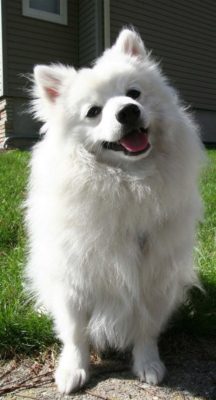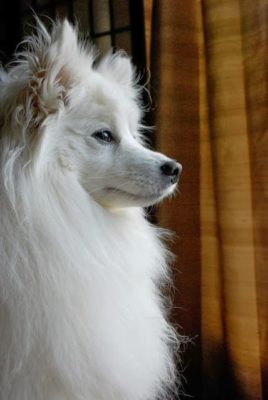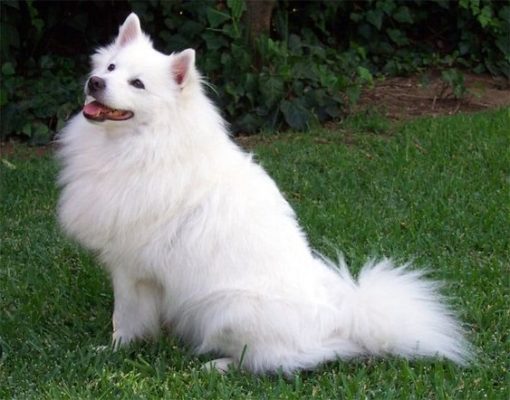Volpino Italiano
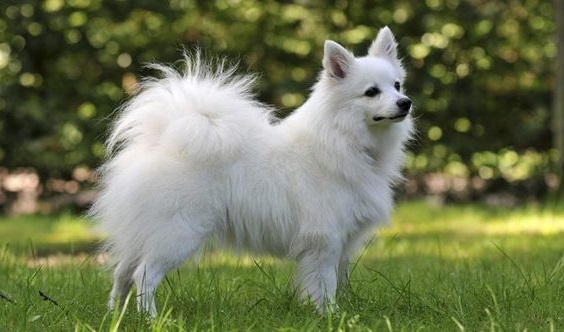
These dogs are very active, energetic, and friendly. They quickly become attached to their owner and want to spend as much time as possible with him. However, they are unobtrusive. If they have something to do or lots of toys, they can easily endure loneliness. The Volpino Italiano can be a great watchdog at home because it barks very loudly despite its small size.
Table of Contents
Breed Information
| Another Name | Volpino, Cane del Quirinale, Cane di Firenze |
| Origin | Italy |
| Height | Males 27-30 cm Females 25-28 cm |
| Weight | 4 kg |
| Fur | Tight, very long, straight and protruding |
| Color | White, ginger |
| Lifespan | 14-16 years |
| FCI Classification | Spitz and primitive types |
| Group | Watchdogs |
| Price | $660-2600 |
Breed Photos
Origin History
The Volpino Italiano comes from the European spitz, which appeared in the world back in the Bronze Age. The Italian Spitz’s ancient origin is evidenced by the images on the Etruscan pottery, which date back to the IX century B.C.
Also, Volpino Italiano was depicted in the picture of the famous artist Vittore Carpaccio. These dogs were bred most often in Florence, hence the dogs’ other name, the Florentine Spitz. The dogs were widely popular and used both in the aristocracy courts and on the farms of ordinary villagers.
The name Volpino Italiano means “Italian fox” because their appearance resembled that of a small fox.
The official history of the dogs began in 1901 when they were first entered in the pedigree book. The International Canine Federation recognized and approved the breed in 1956.
In the middle of the last century, the dogs were on the verge of extinction; only a few purebred Volpinos in the world. A program for the preservation and restoration of the breed began.
Appearance
The Volpino Italiano is small in size and harmonious in build. It has thick and very long hair. The body has a square shape. Males are slightly taller than females. Their height is about 27-30 cm, the height of bitches – 25-28 cm. Weight about 4 kg.
The head is wedge-shaped. The muzzle has a conical shape; the nose is always black. The eyes are oval, widely spaced, usually dark golden. The ears are triangular and set close together.
The tail is curved into a ring and set high. The paws are small but strong. The hair of the Italiano Volpino is long, thick, straight, and tough to the touch. A collar is formed on the neck. The color is always either pure white or solid red.
Character
These dogs are very active, energetic, and friendly. They quickly become attached to their owner and want to spend as much time as possible with him. However, they are unobtrusive. If they have something to do or lots of toys, they can easily endure loneliness.
The Volpino Italiano can be a great watchdog at home because it barks very loudly despite its small size. From early childhood, you should teach the dog not to bark for no reason.
Up to his old age, Volpino Italiano likes to play a lot and actively spend time. They are easily given to various sports games and competitions between dogs.
It treats children well, but you need to remember that this proud dog can stand up for itself if children are naughty. With other animals in the house, do not conflict, and they will play together.
Care
If you give a lot of time to exercise, the dog can easily live in an urban apartment. However, it is worth remembering that he may start to damage the house and ruin the furniture if there is not enough activity.
The dog is tidy and always knows himself not to get dirty. She will bypass puddles and marshes on her own, so she doesn’t get her coat dirty.
The Volpino Italiano likes to spend a lot of time with toys, so you should take care that he always has something to play with.
Walk your dog twice a day for at least an hour. If it’s rainy outside, you should dress your dog in a special coat.
The hair should be combed out every other day or so as they shed. It is recommended to bathe about once a month, but if the coat gets dirty earlier, you can wipe it with a damp towel.
Training
Volpino Italianos are great for people who have never had a dog before. They are intelligent, have a good memory, are easy to train, and are not naughty.
Training should be done from an early age. From the first days of the puppy in the house, you need to show him who is the master of the house. But it would help if you did not yell at the dog or raise your voice. They react very aggressively and viciously.
Common Diseases
It is important to remember to vaccinate your puppy. Adult dogs are vaccinated every year. They are in good health, but diseases such as these may occur:
- sprains and injuries;
- gingivitis;
- Addison’s disease;
- cryptorchidism;
- distichiasis;
- allergies.
Nutrition
The dog can be fed both natural food and food. The two types of food should not be mixed. If fed with natural food, meat should be the mainstay of the diet. Several times a week, it can be replaced with by-products. Once a week, sea fish can be given, but it is advisable to remove the bones. Also in the diet should be oatmeal, vegetables, dairy products. Vitamins and minerals can be added to the diet.
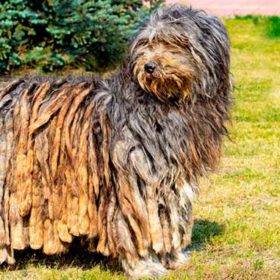 Bergamasco Shepherd
Bergamasco Shepherd Segugio Italiano
Segugio Italiano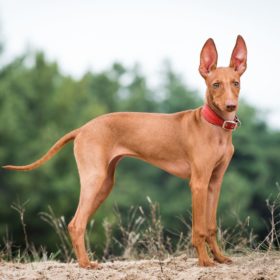 Cirneco dell’Etna
Cirneco dell’Etna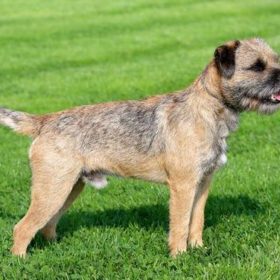 Border Terrier
Border Terrier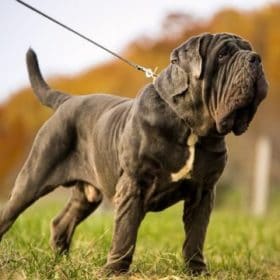 Neapolitan Mastiff
Neapolitan Mastiff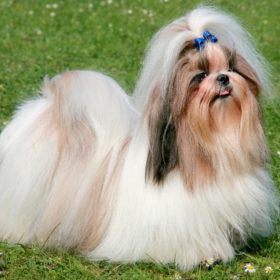 Shih Tzu
Shih Tzu